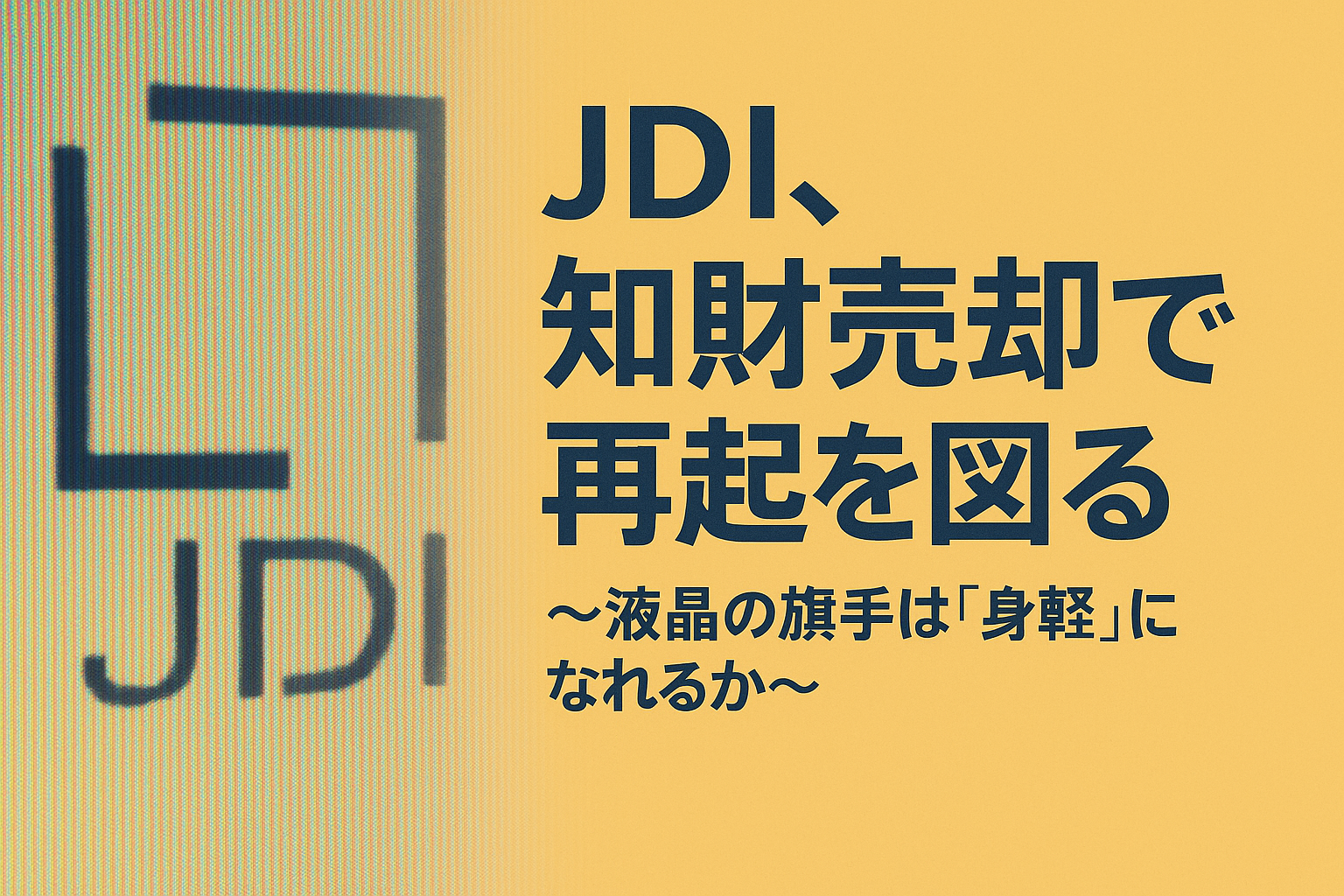On July 30, 2024, Japan Display Inc. (JDI) announced that it had sold a portion of its panel technology-related intellectual property to Ichigo Trust, a fund that serves as its parent company. The deal includes some of JDI’s core technologies related to LCD and OLED panels. However, JDI has signed an agreement that allows it to continue using the sold IP free of charge, ensuring that product development and manufacturing will remain unaffected. The move is seen as a key step in JDI’s ongoing efforts toward revitalization.
JDI’s Struggles and Steps Toward Recovery
JDI was launched in 2012 as the so-called “Hinomaru LCD Alliance,” bringing together the small- and medium-sized LCD businesses of Sony, Toshiba, and Hitachi. Expectations were high at the time. However, the rapid changes in the smartphone market, the shift toward OLED technology, and overlap and competition with JOLED hampered JDI’s growth, leading to chronic financial losses.
In the 2020s, JDI sought a way forward by shifting to automotive displays and developing its proprietary OLED technology “eLEAP,” but its weak financial foundation remained unresolved.
The Aim and Terms of the IP Sale
JDI has now sold part of its patent and technology portfolio related to LCD and OLED displays, including technologies inherited from the now-defunct JOLED. This has enabled an unusual scheme of “selling while still using” the IP. While JDI receives cash from the transaction, it avoids disruption to its products and services.
This arrangement reflects the role of Ichigo Trust not merely as an asset-acquisition fund, but as a stakeholder committed to JDI’s turnaround. In line with this strategy, JDI’s core property, the Mobara Plant, is also slated to be sold to Ichigo.
Why Monetize IP Now?
The display industry today is entering a phase where manufacturing capacity alone is no longer sufficient to survive, amid fierce price competition and the rise of Korean and Chinese players. While JDI’s technology is recognized to some extent, it has lacked a robust mechanism for monetization.
In this context, the decision to treat IP as a “financial asset” to fund operations and reinvest in new ventures is a highly strategic move. It marks a shift in policy from merely “protecting” patents and technologies to actively “putting them in motion to generate value.”
Future Outlook: What Will JDI Abandon and What Will It Retain?
For JDI, selling its IP is a move to become “lighter” and more agile. However, there are concerns that such streamlining could lead to a “hollowing out” of its core technologies or a decline in R&D capabilities.
On the other hand, if JDI continues to leverage technologies like eLEAP and focuses on emerging markets such as automotive and medical displays, it could reinvent itself as a high-value-added technology venture.
This IP sale may not merely be a survival tactic, but rather a prelude to JDI’s redefinition.
“It is not only oneself who can put technology to use.”
JDI’s intellectual property strategy could prompt a broader reevaluation of how IP is managed and monetized across Japan’s manufacturing industry.

